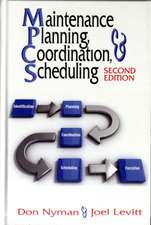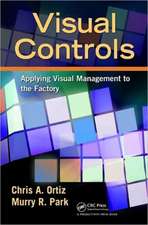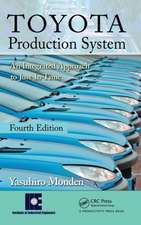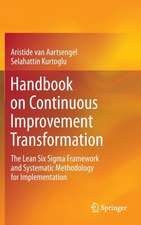Production Planning in Automated Manufacturing
Autor Yves Crama, Alwin G. Oerlemans, Frits C.R. Spieksmaen Limba Engleză Paperback – 14 dec 2011
Preț: 385.62 lei
Nou
Puncte Express: 578
Preț estimativ în valută:
73.79€ • 76.12$ • 61.58£
73.79€ • 76.12$ • 61.58£
Carte tipărită la comandă
Livrare economică 26 martie-09 aprilie
Preluare comenzi: 021 569.72.76
Specificații
ISBN-13: 9783642802720
ISBN-10: 3642802729
Pagini: 252
Ilustrații: X, 239 p.
Dimensiuni: 155 x 235 x 13 mm
Greutate: 0.36 kg
Ediția:2nd ed. 1996. Softcover reprint of the original 2nd ed. 1996
Editura: Springer Berlin, Heidelberg
Colecția Springer
Locul publicării:Berlin, Heidelberg, Germany
ISBN-10: 3642802729
Pagini: 252
Ilustrații: X, 239 p.
Dimensiuni: 155 x 235 x 13 mm
Greutate: 0.36 kg
Ediția:2nd ed. 1996. Softcover reprint of the original 2nd ed. 1996
Editura: Springer Berlin, Heidelberg
Colecția Springer
Locul publicării:Berlin, Heidelberg, Germany
Public țintă
ResearchCuprins
1 Automated manufacturing.- 1.1 Introduction.- 1.2 Production planning for FMSs.- 1.3 Overview of the monograph.- 2 Throughput rate optimization in the automated assembly of printed circuit boards.- 2.1 Introduction.- 2.2 Technological environment.- 2.3 The throughput rate optimization problem.- 2.4 Workload balancing.- 2.5 Scheduling of individual machines.- 2.6 An example.- 3 Approximation algorithms for three-dimensional assignment problems with triangle inequalities.- 3.1 Introduction.- 3.2 Complexity of T? and S?.- 3.3 Approximation algorithms.- 3.4 Computational results.- 4 Scheduling jobs of equal length: complexity, facets and computational results.- 4.1 Introduction.- 4.2 Complexity of SEL.- 4.3 The LP-relaxation of SEL.- 4.4 More facet-defining and valid inequalities for SEL.- 4.5 A cutting-plane algorithm for SEL.- 5 The tool loading problem: an overview.- 5.1 Introduction.- 5.2 Machine flexibility and tool management.- 5.3 Modeling the magazine capacity constraint.- 5.4 Solving the batch selection problem.- 5.5 Grouping of parts and tools.- 5.6 Tool switching.- 6 A column generation approach to job grouping.- 6.1 Introduction.- 6.2 Lower bounds.- 6.3 Upper bounds.- 6.4 Implementation.- 6.5 Computational experiments.- 6.6 Summary and conclusions.- 7 The job grouping problem for flexible manufacturing systems: some extensions.- 7.1 Introduction.- 7.2 Multiple slots.- 7.3 Multiple machines.- 7.4 Other extensions.- 7.5 Summary and conclusions.- 8 A local search approach to job grouping.- 8.1 Introduction.- 8.2 Local search environment.- 8.3 Local search approaches.- 8.4 Computational experiments.- 8.5 Summary and conclusions.- 9 Minimizing the number of tool switches on a flexible machine.- 9.1 Introduction.- 9.2 Basic results.- 9.3 Heuristics.- 9.4Computational experiments.- 9.5 Lower bounds.- Appendix: Graph-theoretic definitions.- References.













